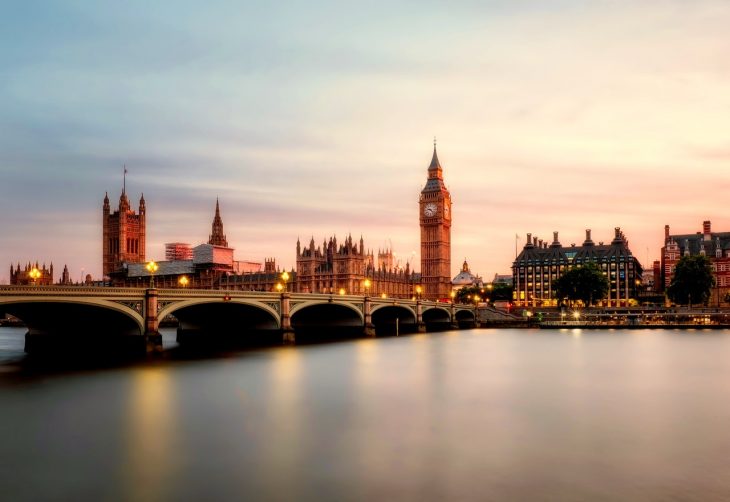
For hundreds of years, Big Ben has been famous for its precise and accurate time-telling. As a UNESCO heritage site, it is also considered to be one of the most famous sights in the United Kingdom. However, despite its reputation, there are still many facts that remain unknown to many about this magnificent landmark. Find out what makes it tick with these Big Ben facts.
- The Big Ben Clock Tower finished construction on May 31st in 1859.
- It stands at 315 feet tall or 96 meters.
- The Big Ben has 334 steps to climb from the ground floor to the belfry.
- Each side of its base measures around 39 feet or 12 meters each.
- The dials on the face of the clock on Big Ben measure 23 feet or 7 meters in diameter
- The Big Ben clock tower is also known as the Great Bell.
- The official name of the tower was the original ‘Clock Tower’.
- In 2012, the tower was officially renamed the Elizabeth Tower after Queen Elizabeth II.
- Out of the tower’s five bells, Big Beg is considered to be the largest.
- The Big Ben tower is said to weigh around 13.5 to 15 tonnes.
- Some people assume that the Big Ben tower is named after Sir Benjamin Hall, who oversaw the tower’s installation.
- The Big Ben clock tower heavily relies on its Victorian-aged mechanism to keep the clock ticking.
- The bells of the tower chime every 15, 30, and 45 minutes after the hour, chiming the loudest each hour.
- This clock tower is also considered to be a symbol of parliamentary democracy in the United Kingdom.
- The Big Ben clock tower is located in Westminster, London, England.
- Big Ben was the largest bell found in the United Kingdom for 23 years.
- A back up electric motor lies inside the Big Ben clock tower in case of outages.
- The Big Ben Clock Tower is considered to be a globally famous British cultural icon.
- Big Ben is also often used to establish London settings in films, TV shows, and the media.
- Big Ben has been officially registered as a UNESCO World Heritage site since 1987.
The name Big Ben refers to the largest bell in the clock tower.
As the main bell that chimes on each hour, the Big Ben is also the largest bell among the 4 found in the clock tower. Despite its name assigned to the bell itself, people also use Big Ben to refer to the clock tower as a whole.
Several theories try to pinpoint where the name Big Ben originated from, but none of them have been confirmed by officials. One of the common theories suggests that the name comes from heavyweight boxing champion Ben Caunt. Similarly, people also theorize that the name comes from the first commissioner of works, whose name is inscribed on the bell itself.
The Big Ben went silent for the first time in 2013.
Since its completion in 1953, the Big Ben has consistently marked each hour in London with a resounding chime. However, the famous clock tower went silent in 2013 to pay respects to departed Prime Minister Winston Churchill.
Considered one of the most successful statemen in the UK, Winston Churchill also served as a member of the Conservative Party for most of his career. For the duration of the former Prime Minister’s funeral, the Big Ben kept silent until his burial was completed.
The original bell of the Big Ben clock tower cracked in 1857 during testing.
While testing the chimes of the bells that would be installed in the Big Ben clock tower, the original bell named Big Ben cracked. They replaced it with another bell, which would also crack later on.
Shortly after, the engineers discovered that the bells cracked due to the hammer’s strike being too large, causing too much pressure to its fissure. They resolved this problem by using a smaller hammer and slightly rotating the bell so that it would not strike at a single area.
The Big Ben clock tower was often referred to by another name by journalists.
During its early operations under Queen Victoria, journalists would often refer to the clock tower was St. Stephen’s tower. At the time, anything that was related to the House of Commons in the news would be connected to St Stephen’s.
Today, the usage continues to persist in the Welsh language, where the parliament and the Westminster district is known as San Steffan.
Big Ben is also known to chime its bells in commemorations of important calendar events.
On numerous occasions, the Big Ben clock tower has chimed in commemoration of large calendar events such as New Year’s Eve, Christmas, and Remembrance Sunday. Additionally, Big Ben’s chimes can also be heard from areas around or near Westminster at a volume of 118 decibels.
This is louder than the sound of a jet plane taking off, which could damage a person’s hearing if they are too close to the source of the noise.
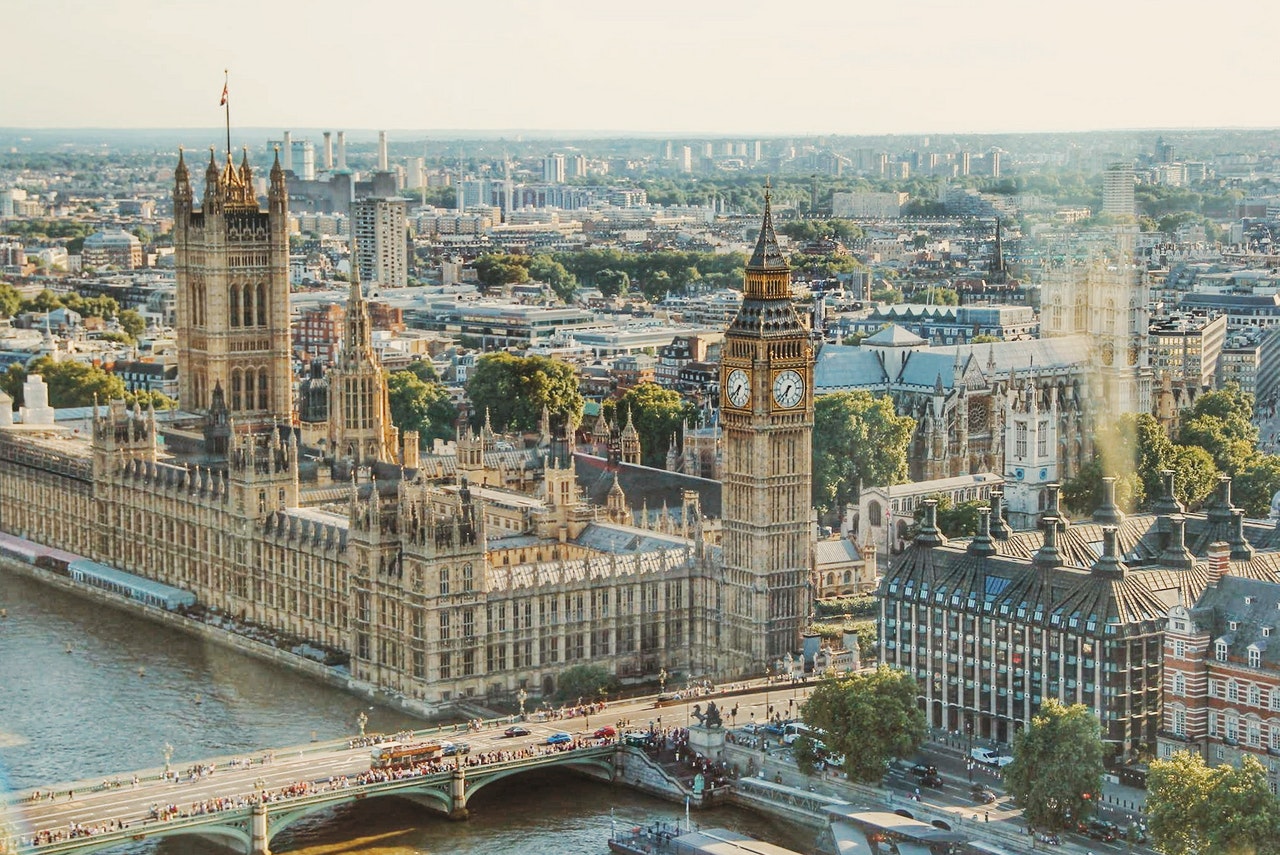
The number 4 on the face of Big Ben breaks traditional clock representations.
Traditionally, clocks mark the first three numbers in traditional Roman Numerals, with the number four represented by four ‘I’s instead of the typical ‘IV’. However, Big Ben breaks this tradition and marks all of the numbers with traditional Roman numeral symbols.
The famous clock tower also features a neo-gothic style that resembles architecture from the Scarisbrick Hall in Lancashire. The Big Ben’s distinct design is also special for being Pugin’s last work before he descended into madness.
The hands of the face of Big Ben’s clocks are made from two different metals.
Originally, the early design for the Big Ben clock tower planned for its dials to be made out of cast iron. However, during the construction process, the material proved to be too heavy. As such, they switched it out for another design that used gunmetal and hollow copper for the hour hand and the minute hand respectively.
After installing these details, they applied the same design on the other three faces of the remaining clocks.
The Big Ben clock tower was designed by an English architect named Augustus Pugin.
Born as Augustus Welby Northore Pugin, this English architect and designer was known for his pioneering role in Gothic Revival architecture in the early 1800s. Apart from his contributions to designing the Big Ben clock tower, his other known designs also include the interior of the Palace of Westminster. Similarly, he designed many other churches in Ireland and Australia.
After completing his work on the Big Ben clock tower, Augustus Pugin fell into madness and was confined in a private asylum at Kensington House. Later on, he fell into a coma which would lead to his death.
There are a total of 23 light bulbs that illuminate the face of each clock on the tower.
On the face of the clocks of Big Ben, each light can last for over 60,000 hours. In terms of power, this generates nearly 7 years worth of light.
Before getting replaced with electric light bulbs, gas powered the dials of the clock. Apart from the faces of the clocks, the body of the Big Ben clock tower also illuminates at night, with the topmost section of the tower lighting up in green.
The Big Ben renovation might provide its first-ever toilet.
In August 2017, officials stated that Big Ben will undergo a renovation project to be completed in 2021. Official renovation plans state that an elevator will be added to the tower for staff and visitors who wish to head up to the Belfast of the tower.
The renovation involves re-painting and re-glazing the interiors and exteriors of the tower, as well as refurbishing the clock dials. Other details include adding a restroom for visitors and staff members for the first time since Big Ben’s establishment.
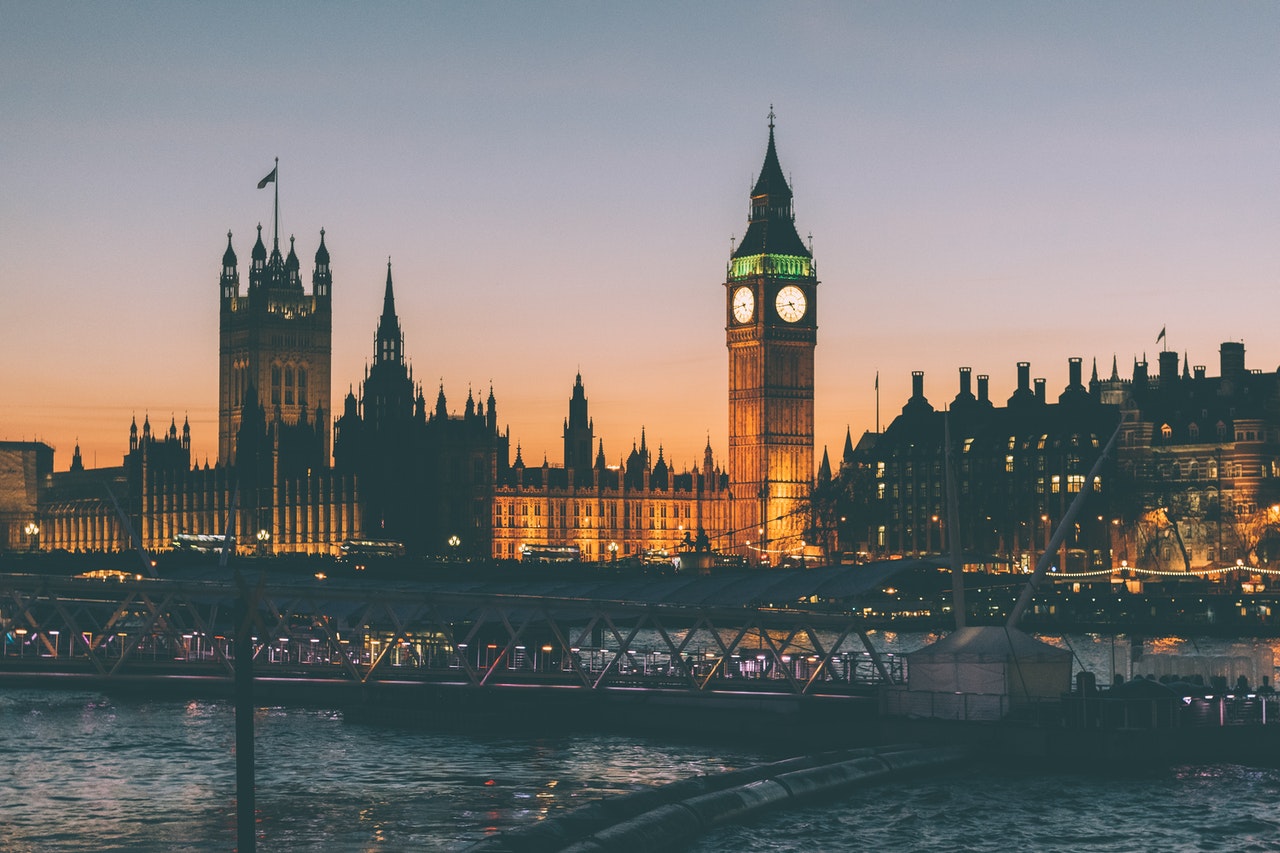
The Big Ben plays a large role during New Year festivities in the UK.
During this time of the year, many tourists and locals gather around Westminster to join the annual countdown on New Year’s eve. Annually, Big Ben typically chimes at the stroke of midnight, followed by a large fireworks display around its general vicinity. On average, 100,000 people attend these events each year.
The Big Ben clock tower also has a famous reputation for having accurate time-telling.
According to reports from BBC, the Big Ben clock tower is typically accurate in time-telling within two seconds of the exact time. However, over time, some have observed that the clock tower’s time-telling abilities can be influenced by the weather. In extreme conditions, the mechanisms in the Big Ben may behave differently. However, it’s still mostly accurate.
If you ever find yourself needing the time when you visit London, you can always glance at the clock of Big Ben tower.
The 4 quarter bells in the Big Ben clock tower sound out different musical notes.
During each quarter of the hour, the Big Ben clock tower plays four different tunes. These notes come in G sharp, F sharp, E, and B respectively from the first 15 minutes and so forth. Each chime is played by a different bell, with the last note played by Big Ben at the strike of every hour.
Every 15 minutes, the clock tower will typically chime for a few seconds before going silent again to mark each quarter of the hour.
The Big Ben bell traveled through the River Thames to reach the tower.
Before being installed in the famous clock tower, the bell later to be known as Big Ben was mounted in New Palace Yard in 1858. The bell was transported to the tower through a barge that traveled down the river Thames. Later on, the bell was placed on a trolley pulled by 16 horses in total.
During the transportation, crowds of people would cheer on its progress until it reached the clock tower. Additionally, the process of taking the bell up to the belfry took a total of 18 hours to accomplish.
Research has shown that severe weather conditions can alter how Big Ben tells the time.
For years, it has been noted that under certain extreme weather conditions, the time-telling accuracy of the Big Ben clock tower can vary. During the winter of 1962 on New Year’s eve, it was observed that Big Ben ran nine minutes late due to snow coming in between the mechanisms of the northern clock on the tower.
In May 2005, Big Ben also stopped moving for a short period due to a severe heatwave which caused the gears of the clock to slow down by one minute. In other instances, flocks of birds perching onto the hands of the clock also cause Big Ben to inaccurately tell the time.
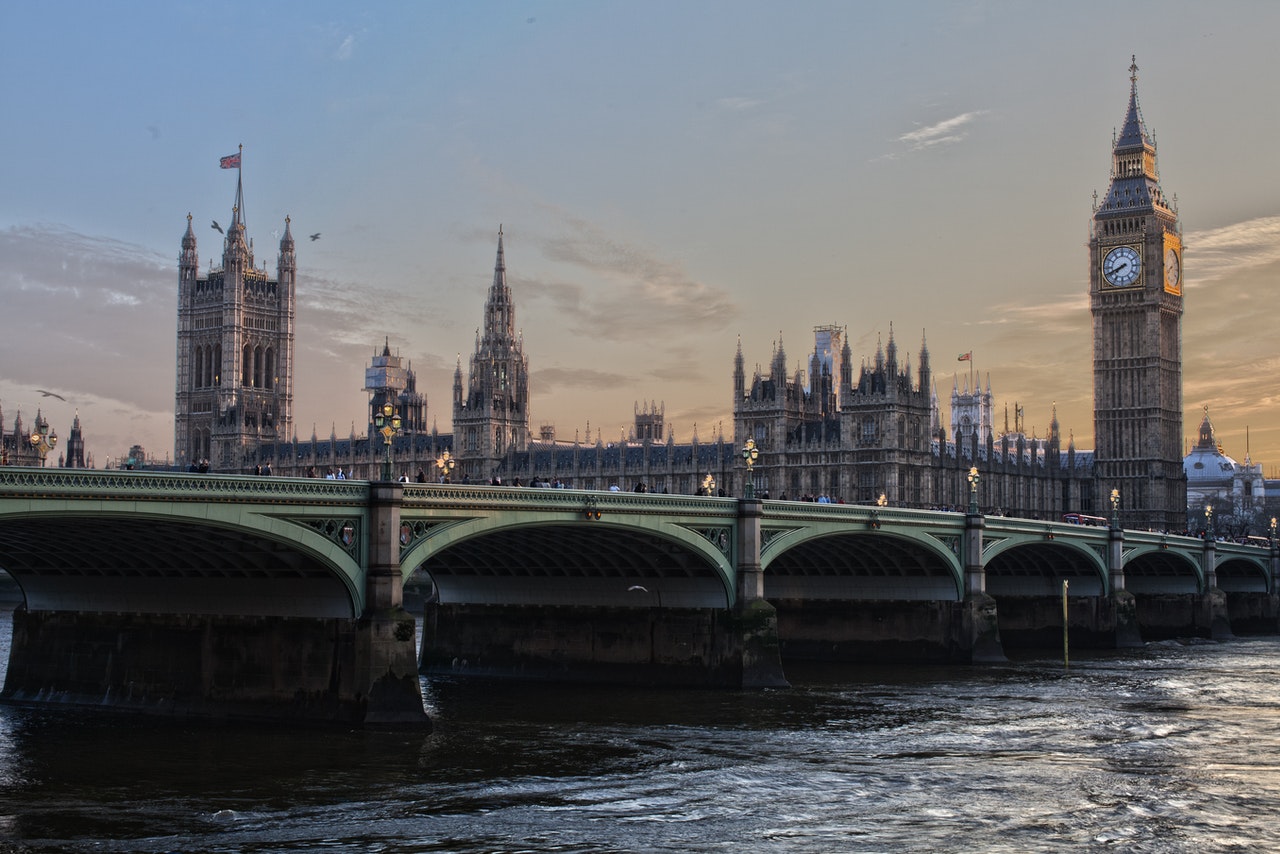
The Big Ben's chimes first reached the radio in 1924.
On December 31st, 1923, the chimes of the Big Ben clock tower were broadcasted on live radio for the first time in history. presented by BBC radio, Big Ben had chimed at the strike of midnight to commemorate the start of the new year.
At the time, this was also used as a time signal service which also noted the beginning of the Radio 4 news which would start at 6 o’clock.
The clock faces of the Big Ben clock tower were unlit until the end of the second world war.
For the duration of the Second World War, the faces of the clocks of Big Ben remained unlit. This was done to avoid guiding bomber pilots towards the area during the Blitz.
Additionally, Big Ben also remained unlit to comply with wartime blackout regulations set in 1939.
The base of each clock dial on Big Ben features Latin inscriptions.
The inscriptions on each of the bells bear the same phrase, Domine Salvam fav Reginam Nostram Victoriam Primam. In English, this translated to ‘O Lord, keep safe our Queen Victoria the First,’ referencing Queen Victoria’s rule.
The bell Big Ben's original name was Royal Victoria.
Before it was installed, the bell known today as Big Ben was originally going to be called Royal Victoria in honor of Queen Victoria the First. However, this was later on changed, naming the structure’s entirety as the Victoria Tower.
This name was decided on during a Parliamentary debate, where an MP had suggested the name Big Ben for the bell itself instead. However, this comment was not recorded in the traditional transcripts of the Parliamentary debates.
The interior of Big Ben’s tower is accessible exclusively to residents of the United Kingdom.
To gain access inside the tower of Big Ben, residents must arrange a tour to attend through their Member of Parliament in advance. The tour should be pre-scheduled on a selected day and at a specific time where identification will be confirmed first before entering the tower.
Additionally, the Big Ben does not offer public tours most especially not to tourists and non-residents. However, due to the scheduled renovations of the clock tower, all tours are closed until its reopening in 2021.
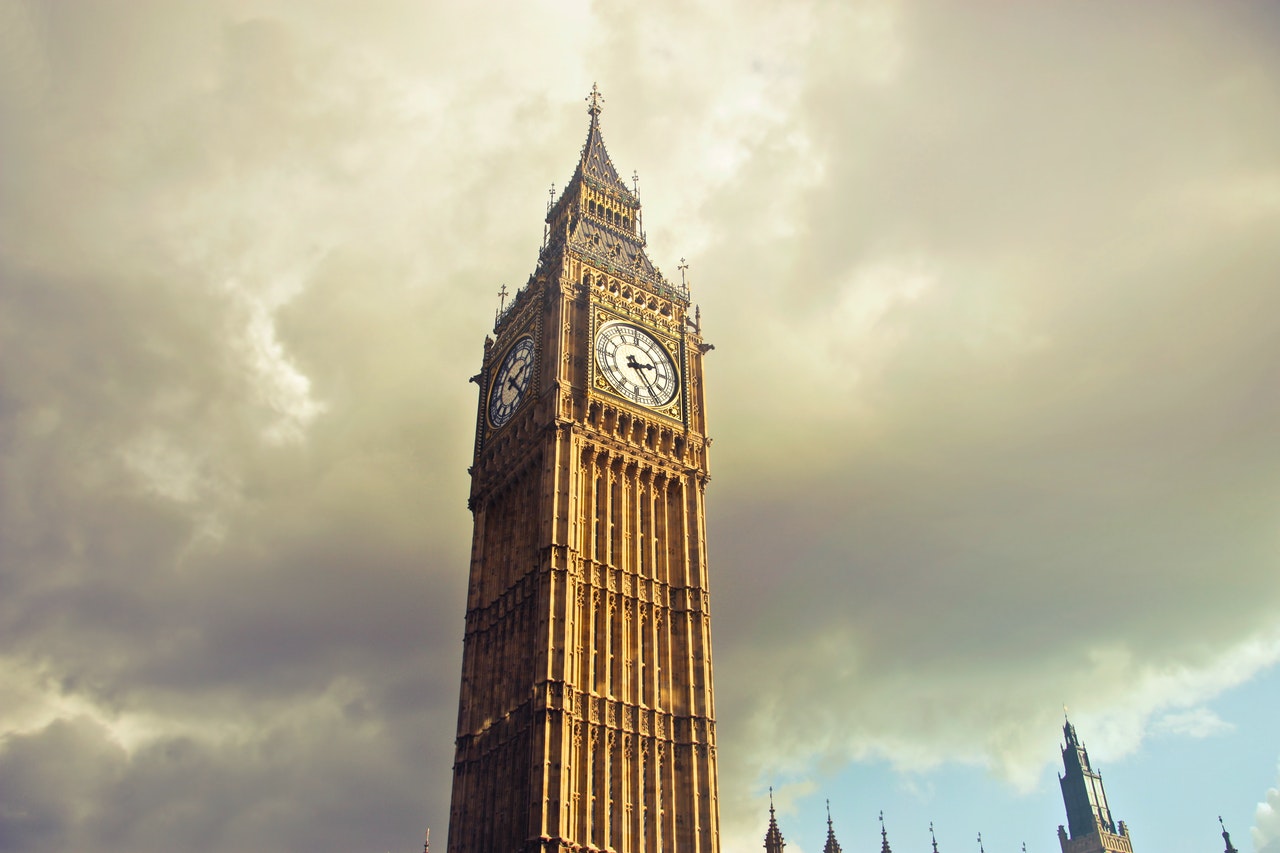
A legend states if Big Ben chimes 13 times, the lion statues at Trafalgar Square will come to life.
While there are many versions of this legend, it generally states that when the lions come to life, they will either defend the people of the city or attack them. Established in the early 19th century, the Trafalgar Square commemorates the Battle of Trafalgar and the British naval victory in the Napoleonic Wars.
The site has been considered to be a significant landmark for centuries, with several sculptures in the vicinity, including the monumental bronze lion statues.
The Big Ben first chimed on July 11th,1859.
At the time, the clock tower was officially recognized as Elizabeth Tower upon its completion. The Big Ben’s clock started running on the May 31st, 1859, with its first hourly chimes heard on the 11th of July.
In the same year, the first quarter chimes of the other three bells began on the 7th of September.
Cleaning the Big Ben clock tower takes approximately a week to complete.
In 2018, the Big Ben clock tower underwent a cleaning schedule after four years, taking six to eight days to finish in good weather. During the cleaning process of the tower’s clocks, the maintenance team stopped the mechanism of the clocks to ensure the safety of the cleaners.
The maintenance team for the Big Ben clock tower uses penny coins to adjust the time.
A special mechanism inside the Big Ben clock tower allows staff members to control the speed of the clock by 0.4 seconds a day. To change the speed of the clock, the maintenance team adds or subtracts penny coins from a special mechanism which controls the pressure, gears, and temperature of the clock.
The construction for the Big Ben clock tower fell five years behind the initial schedule.
With the design finalized in 1851, the clock was completed three years later in 1854. However, the building itself was not completed until five years later due to the changes being made to the original plans for the tower.
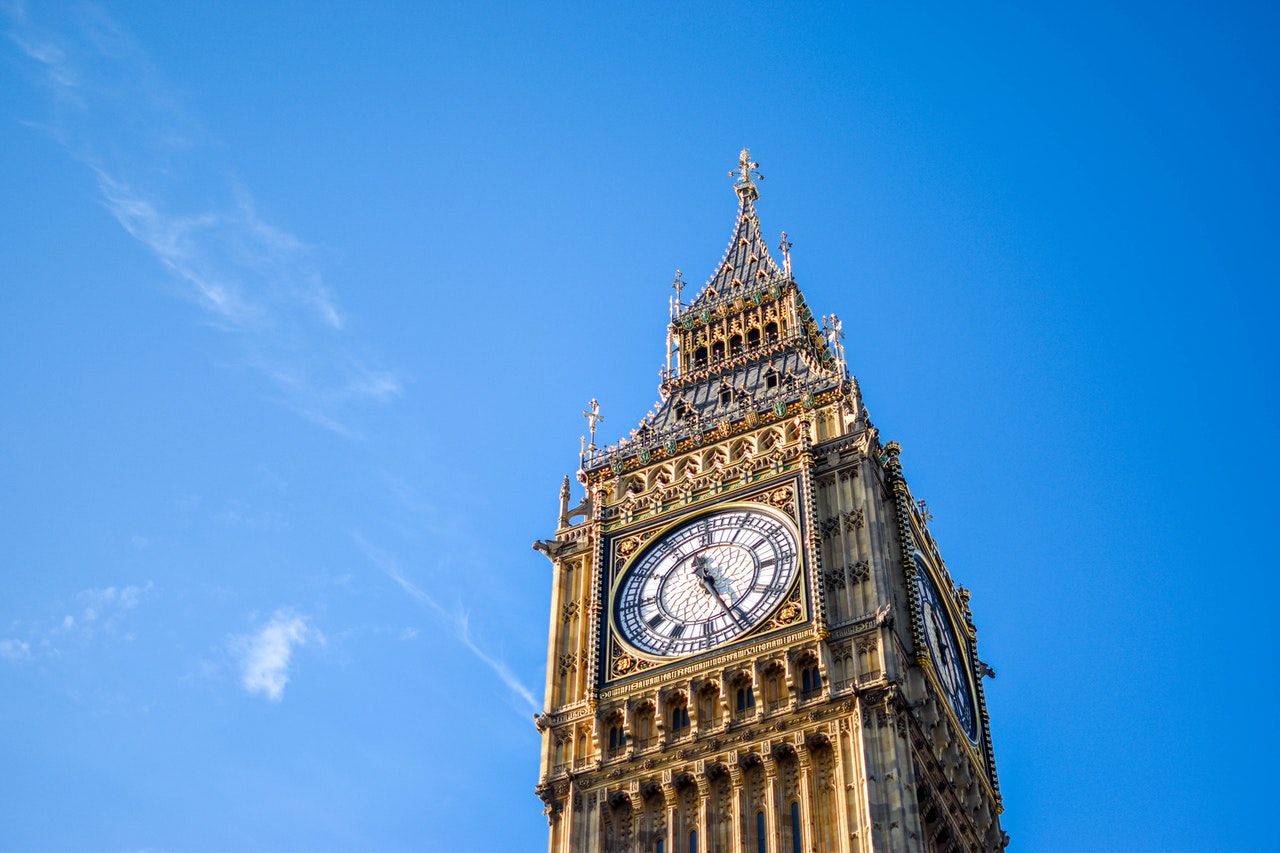
The Big Ben clock tower survived a German bombing in 1941.
During the Second World War, the Big Ben clock tower suffered major damages from the German Nazi bombing during the Blitz. In May 1941, an air raid damaged the roof of the tower and its dials, also destroying the House of Commons chamber.
To restore the tower to an acceptable state, London spent over 18 to 79.7 million pounds on repairs alone.
Workers at the Big Ben clock tower hand wind the clock three times a week.
To keep Big Ben running accurately, workers at the Big Ben clock tower have to manually wind each clock. According to the employees, the winding for each clock takes a total of 1.5 hours to complete.
Done continuously, this process is scheduled three times a week as long as the Big Ben clock tower is operational.
On July 27 of 2012, Big Ben chimed 30 times to commemorate the 30th Olympic Games.
On this day, Big Ben chimed 30 times at 8:12 am to signal the start of the 30th Olympic games in London. The famous clock tower chimed for a total of 3 minutes long to commemorate the event during the beginning of the first games.
This event required getting special permission from the Palace of Westminster to allow the Big Ben clock tower to chime its bells out of its regular sequence.
The bell referred to as Big Ben is also called the Great Bell.
While this is the official name for the bell, the name Big Ben is more commonly extended to the entire tower itself. Aside from being the largest bell in the tower, it is the only bell that has an official name.
The chimes of Big Ben illustrate the difference between the speed of light and sound.
If you stand by the base of the Big Ben, you can hear the bell being struck by the hammer approximately one-sixth of a second after it is hit. However, if you listen to the chimes of the bells of the tower over a live transmission on the radio, you will hear it more quickly than those who are on site of the tower.
According to physics, the speed of light travels much faster than the speed of sound in the air. If you are listening to live transmissions, these sounds are transmitted faster and can be picked up much quicker by the human ears.
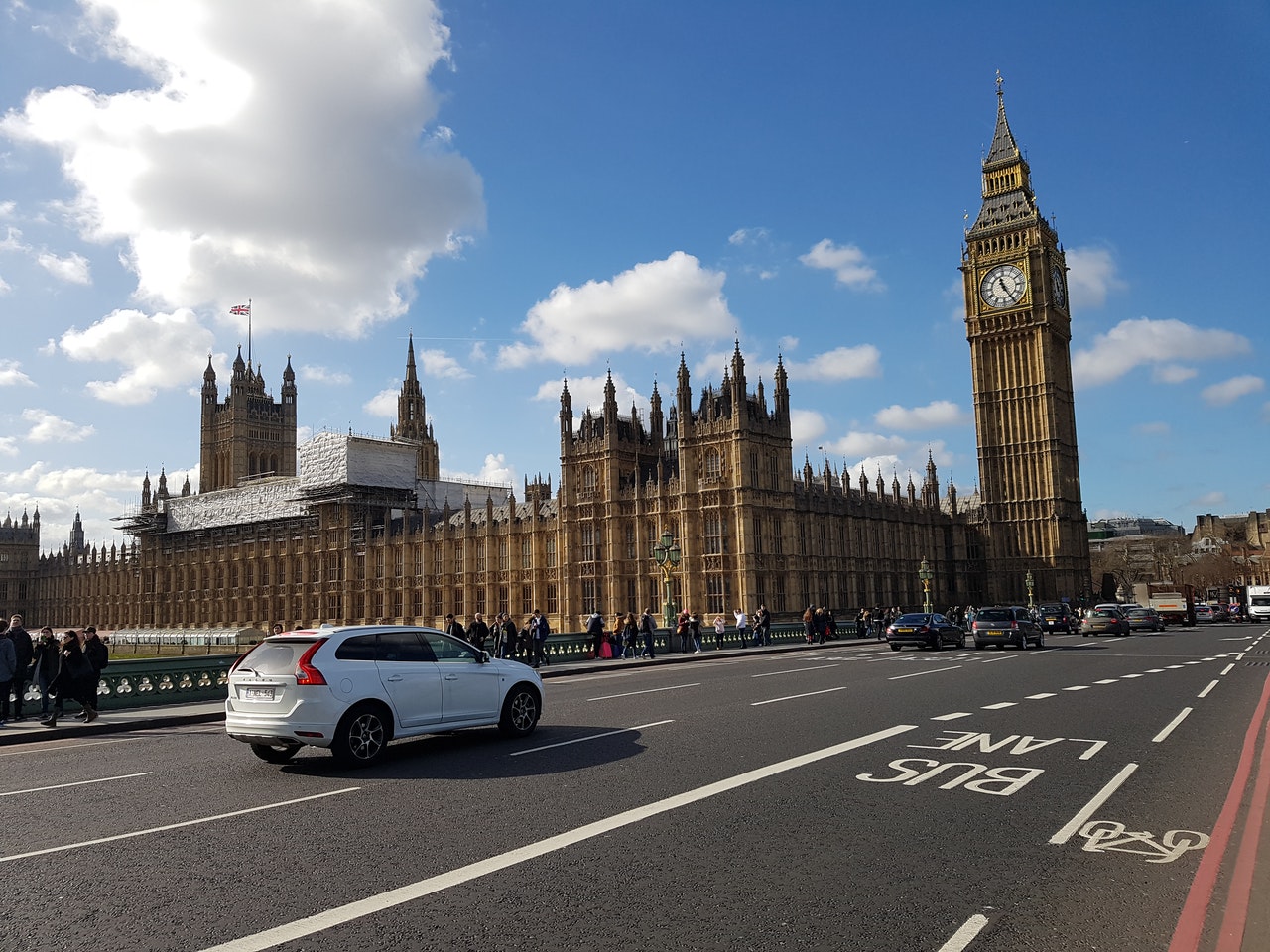
Due to changing ground conditions over the years, the Big Ben clock tower tilts slightly.
Since the completion of its construction, the Big Ben clock tower has leaned slightly towards the northwest. Researchers have stated that the tower now leans around 230 millimeters or 9.1 inches northwest due to the changing ground conditions over time.
While the tower now has an inclination of approximately 1/240, experts state that it would not be a problem until 5,000 to 10,000 years into the future. However, other natural events such as large earthquakes could further damage the foundation underneath the Big Ben clock tower over time.
The first major breakdown that the Big Ben clock tower had experienced was in 1976.
During this event, the air brake speed regulator of the chiming mechanism of the Big Ben clock tower failed to operate properly. As a result, this caused significant damage to the clocks of the tower which required it to be shut down to run the proper maintenance needed.
The clocks of Big Ben were shut down for a total of 26 days over 9 months in total. At the time, engineers stated that the problem was caused by the mechanism experiencing fatigue from over 100 years of use.
Each clock face of Big Ben is made up of approximately 312 opal glass shards.
During the construction of the clocks for the Big Ben clock tower, each clock face was treated with the utmost care. The Big Ben’s clocks all used opal glass shards on their faces, which could easily break under considerable pressure.
The faces of Big Ben’s clocks measure around 9 and 14 feet long, rising about 320 feet up from the ground. Each dial on the face of the clock also uses an iron frame that helps support the opal faces and allows it to be easily removed for inspections.
In 1932, the chimes of Big Ben were broadcasted to international audiences for the very first time.
During this event, the chimes of the Big Ben clock tower were broadcasted during a speech presented by King George V. Held by the BBC in Sandringham. the speech celebrates the power of the wireless broadcast which could help unite all the people of the United Kingdom Empire.
During his speech, King George V also wished UK citizens from all over the world a merry Christmas. After this event, the broadcast became a traditional feature of Christmas broadcasting in the United Kingdom.
Weather conditions can also cause the Big Ben clock tower to swing back and forth.
In the events of extreme weather and strong winds, the Big Ben clock tower can be found swinging back and forth by a few millimeters. Due to the United Kingdom’s usual weather patterns, the Big Ben clock tower was designed to withstand strong winds and was built to be weather resistant as well.
However, it has been noted on numerous occasions that extreme weather can affect the performance of the clocks inside the Big Ben. These issues can include gears shutting down from both the cold and hot weather and other malfunctions that could occur over time due to mechanisms failing.
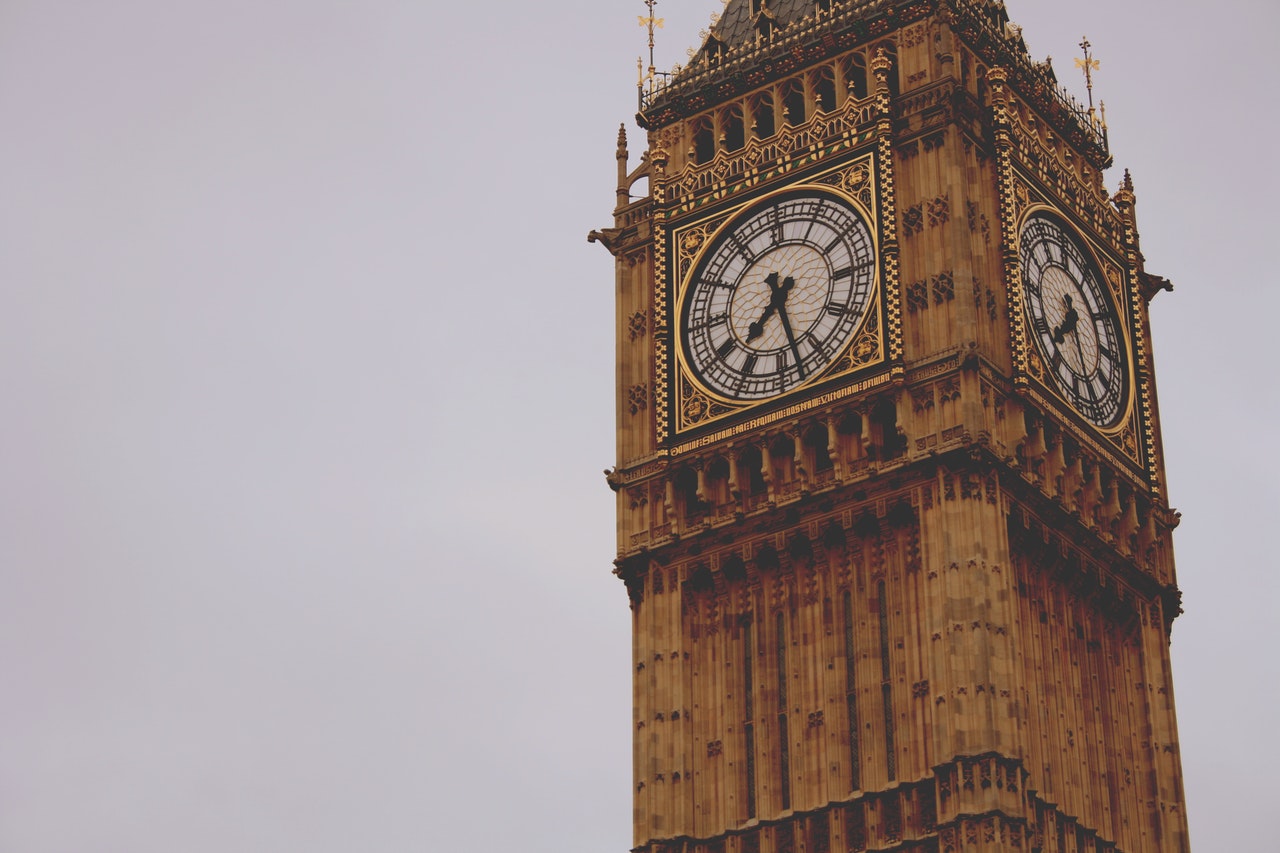
Both the dials of the Big Ben clock tower and the belfry are illuminated at night.
Those who reside in London and live an appropriate distance from the tower can also view the illumination of the building at night. The faces of the clock on the Big Ben clock tower illuminate strong white lights so that people would be able to tell the time during the night.
Additionally, the lights of the Big Ben clock tower also help highlight the tower’s most famous feature during the night where it becomes a part of London’s city lights display.
The Big Ben clock tower also features a small prison cell.
Here’s another interesting fact that most people do not know about the Big Ben clock tower. Around a third of the way up to Belfast inside the tower lies a prison room installed in the tower during its construction.
In this room, MPs who would breach the codes of conduct would be detained for a specified amount of time. However, the last time that this prison cell has seen action was in the 1880s when MP Charles Bradlaugh was detained for conflict with the Conservatives.
The tower took a total of 6 years to complete after its foundation was established in 1843.
During the early conceptualization of the Big Ben clock tower, the design underwent many last-minute changes, including the concept of adding clocks to the tower. Due to this, the construction of the tower itself was delayed for several years before it was completed.
Much of the exterior of the Big Ben clock tower is made from Yorkshire Anston stone and Cornish granite, while the interiors used Birmingham foundry and cast-iron girders. In today’s currency value, the Big Ben totals around $79.79 million.
The Big Ben has gone through many renovations.
For several years, the Big Ben clock tower has been closed down numerous times for repairs and other major renovations. Major issues in the past mainly consisted of problems regarding the mechanism and structure of the clocks in the tower.
Due to these events, Big Ben has been silenced for several occasions such as tragic world events and severe weather conditions. As of 2017, Big Ben has also been silenced once again due to major renovations. On estimate, it is not scheduled to operate again until 2021.
The windows of the Big Ben clock tower are considered to be quite fragile.
On each side of the Big Ben clock tower, around 7 windows line the belfry right above the clocks of the tower. On occasion, these windows are opened and cleaned by staff members along with the faces of the clocks.
These windows are considered to be so fragile that if a bird were to fly into them, it would cause it to break instantly.
Was this page helpful?
Our commitment to delivering trustworthy and engaging content is at the heart of what we do. Each fact on our site is contributed by real users like you, bringing a wealth of diverse insights and information. To ensure the highest standards of accuracy and reliability, our dedicated editors meticulously review each submission. This process guarantees that the facts we share are not only fascinating but also credible. Trust in our commitment to quality and authenticity as you explore and learn with us.
